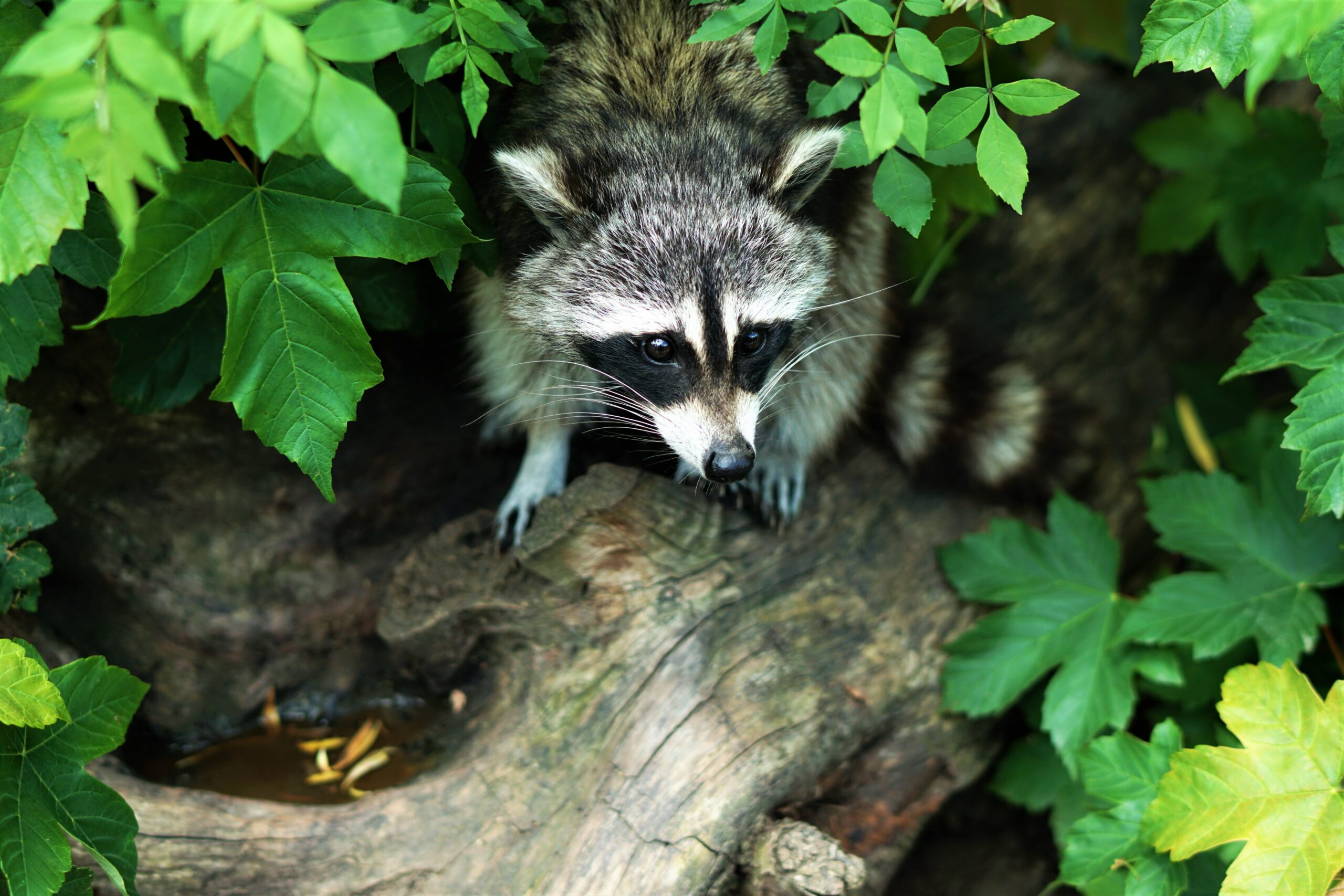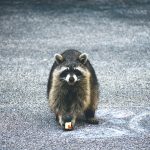Understanding Raccoon Anatomy
Significance of a Tail
Raccoons are known for their distinctive ringed tails. However, the tail is not just a cosmetic feature. It serves several important functions for the raccoon. The tail provides balance when the raccoon is climbing trees or walking along narrow branches. It also helps the raccoon to swim by acting as a rudder. In addition, the tail is used for communication between raccoons. They use their tails to signal to each other, such as when they are feeling threatened or aggressive.
Physical Attributes of a Raccoon
Raccoons are medium-sized mammals with a distinctive black mask around their eyes. They have thick fur that is grayish-brown in color, with darker fur on their legs and tail. Underneath their fur, raccoons have tough, leathery skin that helps to protect them from scratches and bites.
Raccoons have sharp claws that are retractable, which means they can be pulled back into the paw when not in use. This helps to keep the claws sharp and protects them from wear and tear. Raccoons also have sensitive paws that are well-adapted for climbing trees and grasping objects.
Their eyes are well adapted for seeing in low light conditions, which is why they are primarily nocturnal animals. Raccoons have excellent hearing and a keen sense of smell, which they use to locate food and avoid danger.
In conclusion, while raccoons can survive without a tail, it is an important part of their anatomy that serves several important functions. Understanding the physical attributes of a raccoon can help you appreciate these fascinating animals and their unique adaptations.
Raccoon Survival Skills
Raccoons are known for their ability to survive in a variety of environments, and their unique set of skills allow them to adapt to different situations. Here are some of the key survival skills that raccoons possess:
Raccoon Diet
Raccoons are omnivores, which means they eat both plant and animal matter. Their diet can vary depending on the season and the availability of food. In the spring and summer, they tend to eat more insects, fruits, and vegetables, while in the fall and winter, they rely more on nuts, seeds, and other plant matter. They are also known to eat small animals such as rodents, birds, and fish.
Raccoon Nocturnal Habits
Raccoons are primarily nocturnal animals, which means they are most active at night. They have excellent night vision and are able to navigate in the dark using their keen sense of smell and touch. They are also skilled climbers and can easily scale trees and other structures to search for food or escape danger.
When it comes to survival, raccoons are able to adapt to a variety of environments and find food even in difficult situations. They are known for their intelligence and problem-solving abilities, which allow them to overcome obstacles and find creative solutions to challenges.
Overall, raccoons are highly adaptable animals with a range of survival skills that allow them to thrive in a variety of environments. Whether they are searching for food, eating, or navigating at night, their unique abilities help them to survive and thrive in the wild.
Impact of Tail Loss on Raccoons
If you have ever wondered whether a raccoon can survive without a tail, the answer is yes. However, the loss of a tail can have significant impacts on a raccoon’s life. In this section, we will explore the causes of tail loss in raccoons and the physical challenges they face without a tail.
Causes of Tail Loss
There are various reasons why a raccoon might lose its tail. It could be due to an injury inflicted by another raccoon, a predator attack, or a birth defect. In some cases, a raccoon may lose its tail due to human activities, such as getting caught in a trap or vehicle accident.
Physical Challenges Without a Tail
A raccoon’s tail is an essential part of its anatomy. It helps them maintain balance, communicate with other raccoons, and regulate their body temperature. Without a tail, raccoons face several physical challenges that can impact their survival.
One of the significant challenges is their ability to balance. Raccoons use their tails to balance when climbing trees, walking on narrow surfaces, and jumping. Without a tail, they may struggle to maintain their balance and fall more frequently.
Another challenge is their ability to regulate their body temperature. Raccoons use their tails to cover their faces and bodies to keep warm or cool. Without a tail, they may have difficulty regulating their body temperature, especially during extreme weather conditions.
In conclusion, while a raccoon can survive without a tail, it can have significant impacts on their life. Understanding the causes of tail loss and the physical challenges raccoons face without a tail can help us appreciate the importance of this unique animal’s anatomy.
Raccoon Life Cycle
As an omnivorous and opportunistic eater, raccoons have a lifespan of about 2 to 3 years in the wild. However, in captivity, they can live up to 20 years. In this section, we will discuss the development stages of a raccoon and the role of the mother raccoon in their early life.
Raccoon Development Stages
A baby raccoon, also known as a kit, is born after a gestation period of approximately 63 days. At birth, they are blind, deaf, and weigh around 2-3 ounces. The newborn stage lasts around 2-3 weeks, during which raccoons are 100% dependent on their mother’s care.
At around 3 weeks old, their eyes and ears begin to open, and they start to explore their surroundings. By 6 weeks, they are fully weaned and start to venture out of the den with their mother. At this stage, they learn important survival skills, such as foraging for food and climbing trees.
Between 6 and 12 weeks, raccoons develop their characteristic facial markings, and their fur becomes thicker and longer. By 12 weeks, they are almost fully grown and can survive on their own. However, they usually stay with their mother until the next breeding season.
Role of Mother Raccoon
Mother raccoons play a crucial role in the development of their young. They provide warmth, protection, and nourishment to their kits, teaching them survival skills and social behaviors. They also move their kits to different dens to protect them from predators and provide them with a variety of food sources.
It is important to note that trapping and relocating adult raccoons can inadvertently cause a litter of babies to be orphaned, as they are not yet able to survive on their own. Therefore, it is essential to seek professional help when dealing with raccoon infestations to ensure the safety and well-being of both mother and baby raccoons.
Are there any other potential dangers to wildlife from human products like bubble gum?
It is essential to consider the potential dangers of gum for wildlife and not just focus on obvious threats. While many associate littering and plastic waste with harm to animals, discarded bubble gum poses additional risks. When ingested, gum can cause blockages in the digestive system of animals, leading to severe health issues and even death. It is crucial to dispose of gum responsibly to protect our wildlife.
What Are the Legalities and Considerations of Keeping a Raccoon as a Pet?
Keeping a raccoon as a pet can have various legalities and considerations. In most states, owning a raccoon as a pet is strictly regulated or illegal due to the risks they pose to native wildlife and public health. Additionally, raccoons have complex care requirements, high energy levels, and a strong tendency for destructive behavior. Even where owning raccoons is legal, potential owners should thoroughly research the local laws and consult with experts to ensure they can provide a suitable environment for these intelligent and resourceful animals.
Raccoons and Human Interaction
Raccoons are a common sight in many urban areas, and their interactions with humans can be both fascinating and frustrating. Here are a few things to keep in mind when it comes to raccoons and human interaction.
Raccoons in Urban Areas
Raccoons are highly adaptable creatures and can thrive in both rural and urban environments. In fact, many raccoons have learned to take advantage of the resources that humans provide, such as food and shelter. This can lead to conflicts between raccoons and humans, especially when raccoons start raiding trash cans or nesting in attics.
To avoid conflicts with raccoons, it’s important to take steps to discourage them from entering your property. This might include securing your trash cans, trimming back overhanging branches, and sealing up any potential entry points into your home.
Raccoons and Trash
One of the most common ways that raccoons interact with humans is through trash. Raccoons are notorious for raiding trash cans and dumpsters in search of food, and they can cause quite a mess in the process.
To keep raccoons out of your trash, consider investing in a raccoon-proof trash can or securing your existing trash can with bungee cords or weights. You might also want to avoid putting out trash on days when it’s not scheduled for pickup, as this can attract raccoons and other wildlife.
If you do encounter a raccoon on your property, it’s important to remember that they are wild animals and should be treated with caution. Never attempt to catch or handle a raccoon, as they can carry diseases such as rabies. Instead, contact a wildlife removal professional to safely and humanely remove the raccoon from your property.
Overall, raccoons can be fascinating creatures to observe, but it’s important to take steps to avoid conflicts with them when possible. By securing your trash and taking other precautions, you can help keep raccoons at bay and enjoy a peaceful coexistence with these clever critters.










